The ICT industry has made numerous innovations related to environmental protection and energy conservation, which have been widely recognized worldwide. Huawei is committed to promoting green ICT solutions, through which we aim to drive industries to conserve energy, reduce emissions, and build a low-carbon society that saves resources.
During the deployment of 5G base stations, Huawei’s 5G Power solution, which features simplification and intelligence, as well as being environmentally friendly, uses technologies related to solar access, efficient rectification, and intelligent voltage boosting to improve energy efficiency from end to end. Thanks to its contributions to energy conservation and emissions reductions for mobile networks, this solution was awarded the Global Industry Award for Sustainable Impact by the ITU this year.
With the help of AI and other technologies, Huawei’s energy-saving solution PowerStar reduces the power consumption of base stations by 10% to 15%. In China’s Zhejiang Province, PowerStar helped a telecom operator reduce the power consumption of equipment on its main wireless network by 12%. This solution is expected to save 26 million kWh of electricity on wireless networks across Zhejiang each year.
Huawei’s hybrid power solution features innovative technologies related to digitization, AI, and advanced energy storage. In stark contrast to traditional diesel generators, this solution realizes zero carbon emissions. For example, after deploying the solution, a telecom operator in Ethiopia saw annual fuel savings of 12 million liters. At the awards ceremony of the 21st AfricaCom, the solution won the Best Sustainable Power Solution award.
Our green solutions for PV power generation also contribute to environmental protection. The Cauchari 300-MW PV power plant in Argentina adopted Huawei’s smart PV solution to provide green power for local residents in Jujuy Province. This move is expected to reduce carbon emissions by about 598,000 tons each year. By the end of 2018, global shipments of Huawei’s smart PV solutions had exceeded 90 GW, generating about 126 billion kWh of clean electricity each year and reducing annual carbon dioxide emissions by more than 60 million tons.
Huawei’s smart cooling solution iCooling@AI uses intelligent technologies to reduce the Power Usage Effectiveness (PUE) of data centers by 8% to 15%. With this solution, the PUE of Huawei’s cloud data center in Langfang has decreased from 1.42 to less than 1.3, saving over 5 million kWh of electricity every year.
Huawei has been improving both software and hardware to extend the lifespans of mobile phones, improve resource utilization, and enhance consumer experience. We offer free upgrades of our EMUI operating system to provide users with the latest features and extend the lifespans of their phones. In addition, we provide convenient and affordable battery replacement and phone repair services to consumers to extend the lifespans of their phones even further.
Huawei actively builds green and low-carbon campuses and strives for green operations by effectively managing energy, procuring clean energy, and building more PV plants on our campuses. We have built PV plants in our Southern Factory in Dongguan, Hangzhou Research Center, Nanjing Research Center, and Xi’an Research Center. These plants have a combined capacity of 19.5 MW, and generated over 16 million kWh of electricity in 2018. In addition, our carbon dioxide emissions per million CNY of sales revenue were 2.89 tons in 2018, representing a 24.5% decrease compared with 2012.
Building a sustainability management system
Huawei has long been committed to developing green products and solutions, and we have established a sustainability management system based on international standards and guidelines such as ISO 26000 and SA 8000. We have also developed and published a series of management approaches and tools such as policies, processes, and baselines in order to fully incorporate environmental protection concepts into every aspect of our routine business operations.
Huawei established a Corporate Sustainable Development Committee back in 2010. This committee aims to ensure the effective execution of our sustainability strategies, such as our environmental protection strategy, better manage sustainability risks, and consistently meet the requirements of customers, governments, and other stakeholders.
We fully utilize our sustainability management processes to plan, implement, monitor, and improve our sustainability work. We also carry out comprehensive assessments covering five areas: leadership, planning, organization and capabilities, process operations, and performance evaluation. These assessments aim to fully understand the maturity of each business domain, identify areas for improvement, and drive business departments to make ongoing improvements. By the end of 2018, we had conducted maturity assessments for four consecutive years. The assessment results show that our sustainability management maturity has continuously improved.
Environmental protection is about much more than concepts. Concepts must be fully integrated as part of the concrete actions taken by every country, company, and individual. We must take such action to fulfill our commitments to keeping our planet green.
Huawei calls on all players across the ICT industry to join us in our efforts to achieve carbon neutrality. Let’s continue developing innovative, green ICT technology and fully empower the green development of all industries. This is how we will create a better world for future generations – a fully connected, intelligent world.






